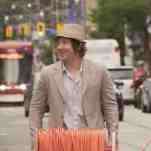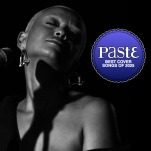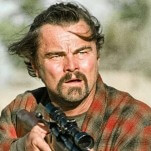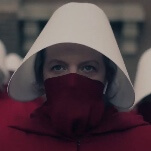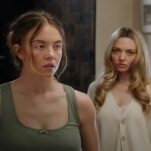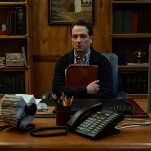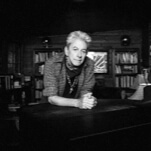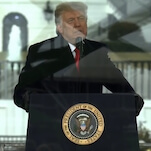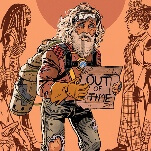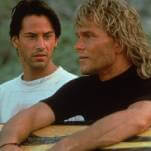Bewitched tweaked ’60s gender roles and became one of the first feminist sitcoms

For most of the history of television, the barrier to syndication—and to profitability—has been 100 episodes. The shows that have made it to that mark are an unusual group. Many were big hits. Some found small cult audiences. Still others just hung on as best they could and never posted numbers quite low enough to be canceled. In 100 Episodes, we examine the shows that made it to that number, considering both how they advanced and reflected the medium and what contributed to their popularity.
Television has always had its high-concept sitcoms, shows where the comedic premise was so integral to the series that it could never simply settle into being about its characters, as most sitcoms do. Think back on Dinosaurs, say, or ALF for examples of largely successful shows that relied heavily on premises that skewed toward the fantastical. The problem with a gimmick sitcom like this is that it’s difficult to do storylines that don’t connect directly to the premise. ALF would always have to deal with the fact that one of the regulars was a secret alien, which left it scrambling if it wanted to do a more low-key episode about the show’s father and son going fishing. Putting a science-fiction or fantasy element at the center of a sitcom has the tendency of unbalancing everything, of creating a situation where the show must get broader and broader and broader, simply because there’s no real way to scale back once aliens or ghosts get involved.
The ’60s were unquestionably the top decade for high-concept sitcoms. Even a relatively normal show for the period like Green Acres started from the idea of two city folk moving out to the country to start working on a farm. The decade’s top sitcom, The Beverly Hillbillies, was this scenario in reverse, and was simply wedded to it. But this was also the decade of the genre sitcom, with shows as diverse as My Favorite Martian, Get Smart, and The Flintstones taking the sitcom and putting it through a filter that offered a skewed take on contemporary relations. The United States was going through one of the most tumultuous decades in its history, yet television was intent on ignoring the social developments taking place throughout the country. And in that sense, the high-concept sitcom ended up being a way to deal with the weirdness of the decade without losing a mass audience. As with much science fiction and fantasy, the weird situations allowed for these series to examine a changing society through a variety of shifting lenses.
Most of these shows have a reputation for being terrible, many of them justifiably. One show that’s earned that reputation a bit unfairly, however, is Bewitched, which debuted in 1964. The series’ high-concept premise was simple and ingenious: What if some normal American suburban guy married a seemingly all-powerful witch? And what if she told him she was a witch, and he just had to deal with it? And what if her mother-in-law kept dropping by? Creator Sol Saks mostly stole the contours of the show from the movie I Married A Witch and the play Bell, Book And Candle, but he left after the pilot, and ABC turned the show over to a young producer named Danny Arnold. What Arnold and the first-season staff built became the longest running of the fantasy sitcoms, at eight seasons, lasting into the ’70s. But they also built something surprisingly sophisticated and smart, something much better than any sitcom about a man who married a witch had any right to be.
Arnold’s first mission was to relegate witchcraft to the show’s sidelines, where it wouldn’t take over the storytelling. If Samantha, the witch at the series’ center, cast a spell, it was usually in the early going of the episode, and the spell would inevitably backfire in a way that allowed for a more realistic problem to arise. Then, she and husband Darrin went through the paces of a domestic conflict that would be familiar to millions of young couples filling the suburbs at the time. Take, for instance, season one’s “Open The Door Witchcraft,” an episode that features only minor instances of magic, and mostly in the first few minutes. It’s more an episode about a husband trying to control his wife and realizing that’s impossible, as well as an episode about the often-impossible attempt to keep up with the Joneses. (Regrettably, all of the episodes available online from the first two, black-and-white seasons have been colorized.)
The episode’s premise—Samantha gets excited by the notion of an electric garage-door opener, uses her magic to open the garage door, and is nearly caught by nosy neighbor Gladys Kravitz, necessitating the purchase of an actual garage-door opener the family cannot afford in order to keep Samantha’s secret—relies on witchcraft to get started, but it very quickly settles into a staple sitcom story about a wife who creates a problem for her husband that spirals out into a larger conflict. A moment late in the episode—when Darrin commands Samantha to stop using witchcraft, even though that’s central to who she is—is surprisingly powerful stuff, even if the chuckling laugh track and overbearing score work as hard as they can to keep things light and pleasant. And as the episode digs deeper into that idea, the show’s true power becomes evident: This is a show, no matter how goofy, about the growing power of women in both the home and society at large in the 1960s. It’s a show about how men weren’t sure how to deal with that, and about how couples where the husband and wife truly loved each other could find solutions to even the most difficult of conflicts by showing each other courtesy and respect.
Arnold actually said that he considered the theme of the show to be a woman with more power than her husband and her husband’s attempts to come to terms with that. (He also said he thought of the show as one about a mother dealing with her daughter marrying beneath her.) The series’ witch mythology was always slightly threadbare—in spite of intriguing hints that both Samantha and her mother, Endora, were hundreds of years old and the fact that both of Samantha and Darrin’s children displayed magical ability—but it indicated that those in possession of witchcraft were capable of almost anything. Their seemingly endless reservoirs of power allowed them to solve essentially any problem via magic, something that could have robbed the show of conflict, were it not for Arnold and the other writers’ ability to center those conflicts on more fundamental emotional questions. Still, the show attempted to answer the question of what a man of the times, with certain expectations, might make of being thrust into a situation where his wife was ultimately much more powerful than him.










